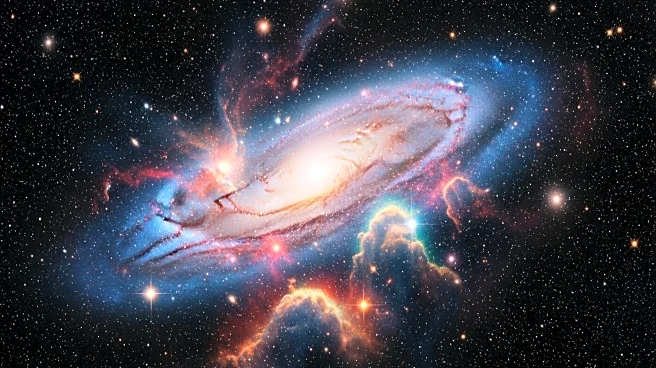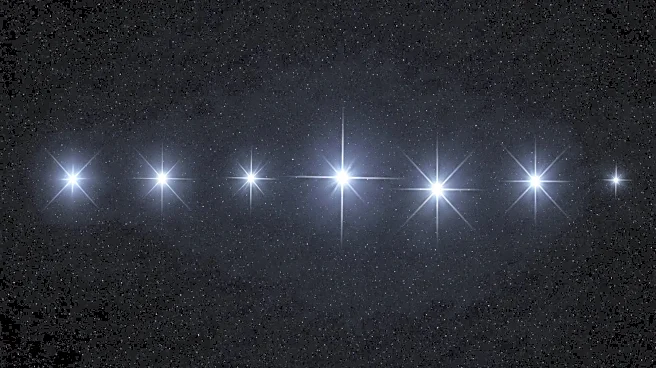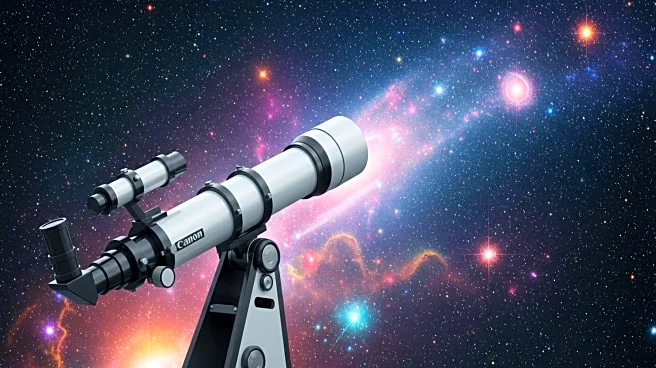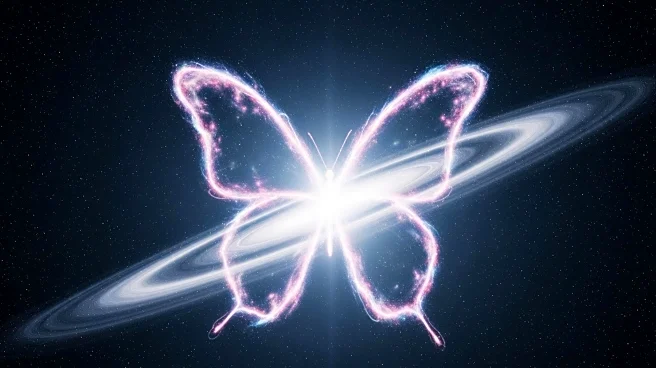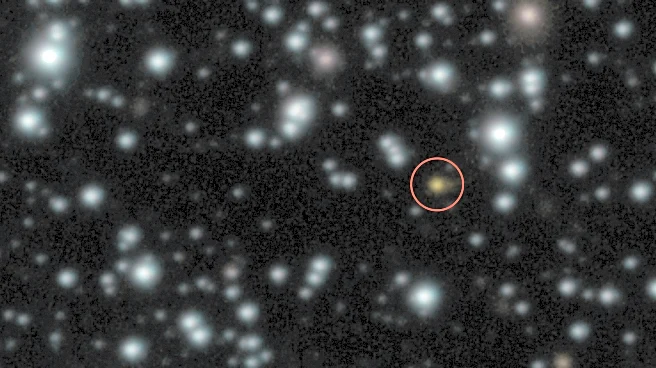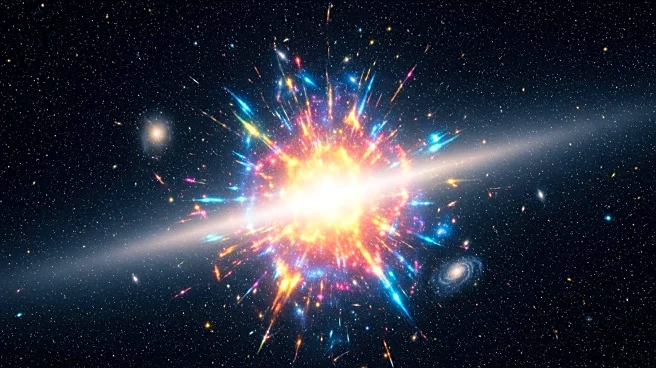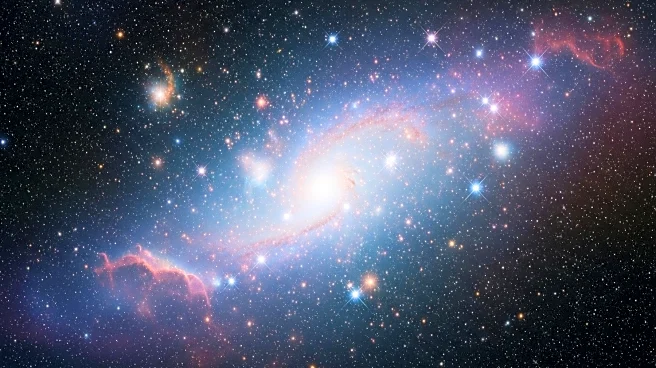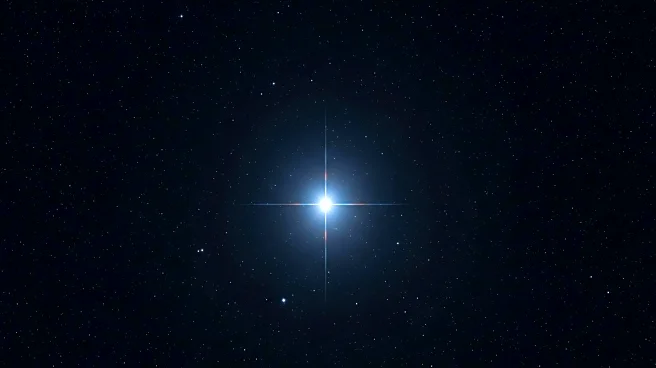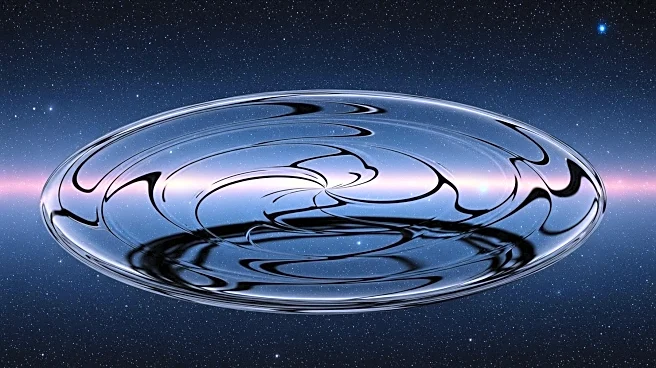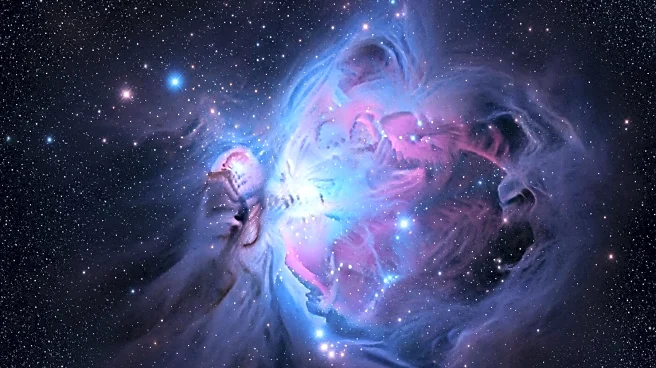What is the story about?
What's Happening?
Japanese astronomers have captured images of a young star, Sh 2-283-1a SMM1, located 26,000 light-years away, using the ALMA observatory. The star exhibits episodic jets and outflows, providing insights into star formation processes in chemically unique environments. The discovery reveals universal star formation physics with varying chemical compositions in outer galaxy regions. The presence of complex organic molecules suggests potential for planet formation, expanding cosmic understanding.
Why It's Important?
The study enhances understanding of star formation across diverse cosmic environments. By observing star formation in low-metallicity regions, scientists can better predict evolutionary paths of galactic regions and potential for life beyond Earth. The findings highlight the influence of local conditions on star and planet formation, offering clues about the universe's earliest stars. The research demonstrates ALMA's capability to expand the frontiers of astronomy, providing resolved images of celestial phenomena at unprecedented distances.
What's Next?
The research team plans to investigate additional protostars in the galaxy's outer reaches to discern variations in ejection cycles and molecular compositions. This ongoing research promises to deepen understanding of star formation in diverse cosmic environments, with potential implications for grasping the universe's developmental history. The study unlocks opportunities to advance knowledge of stellar evolution and the diversity of cosmic environments.
AI Generated Content
Do you find this article useful?
